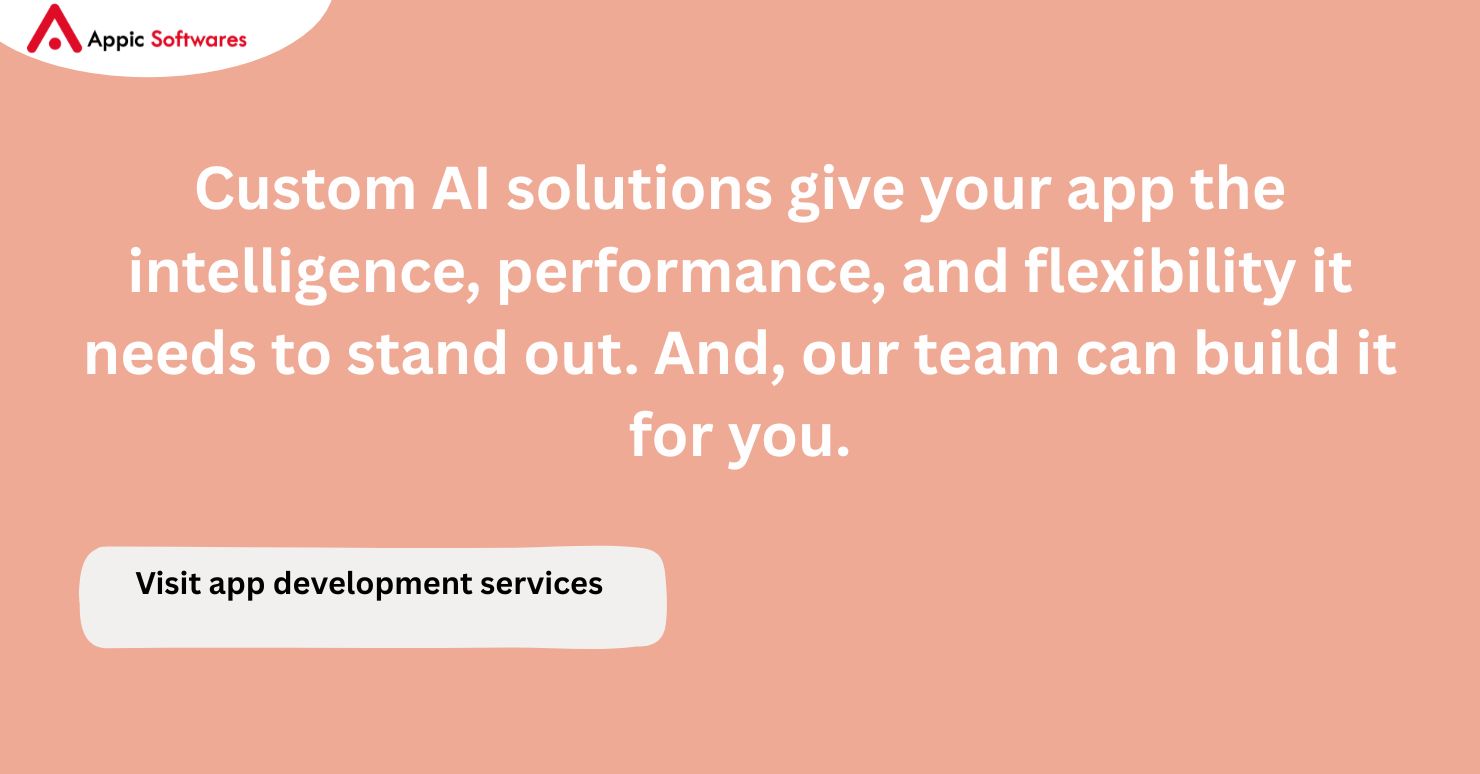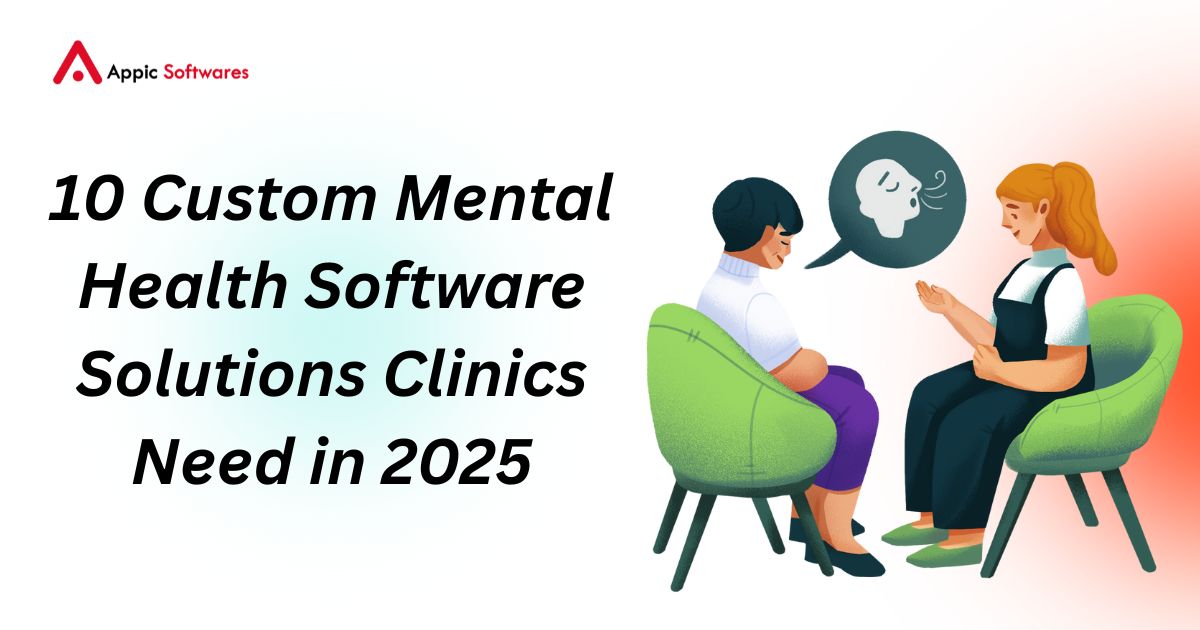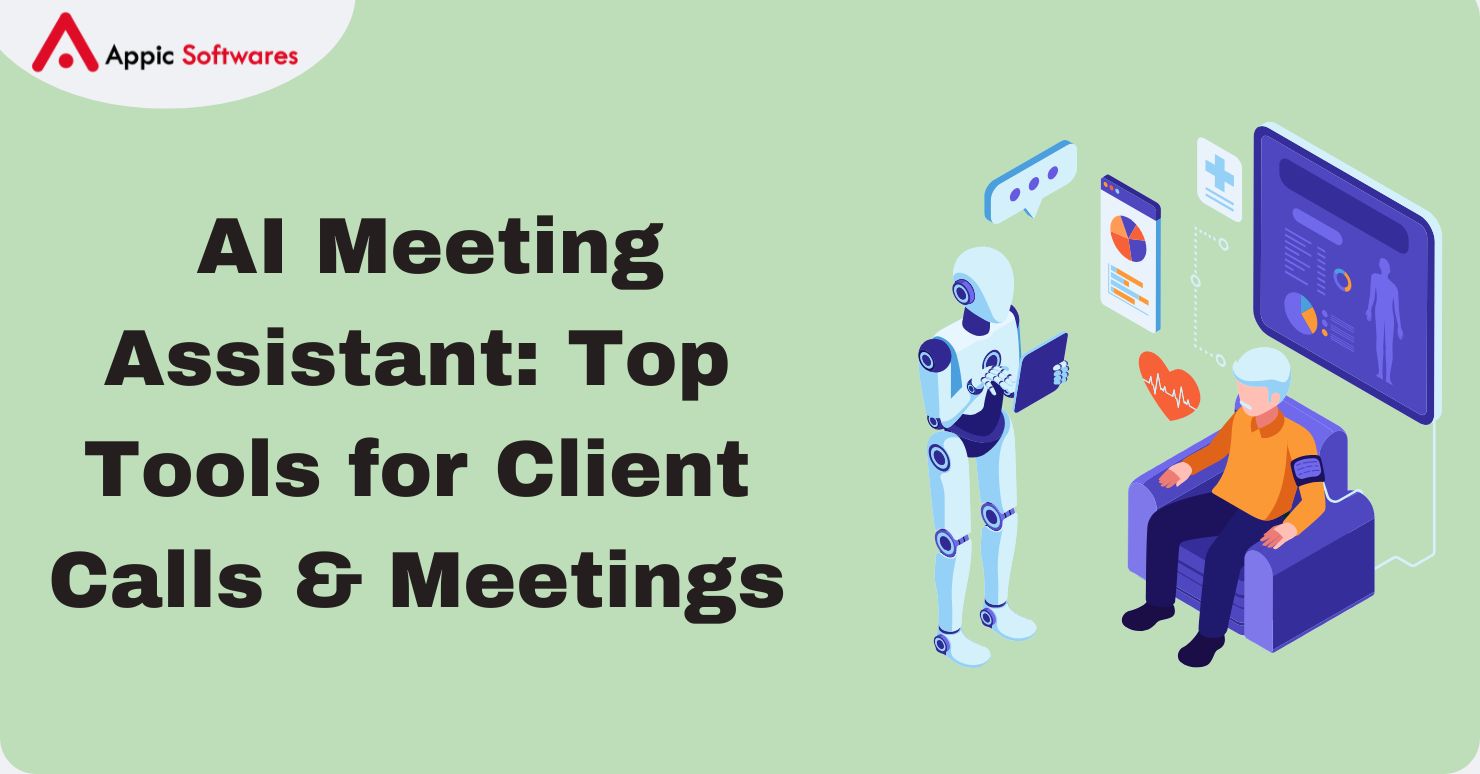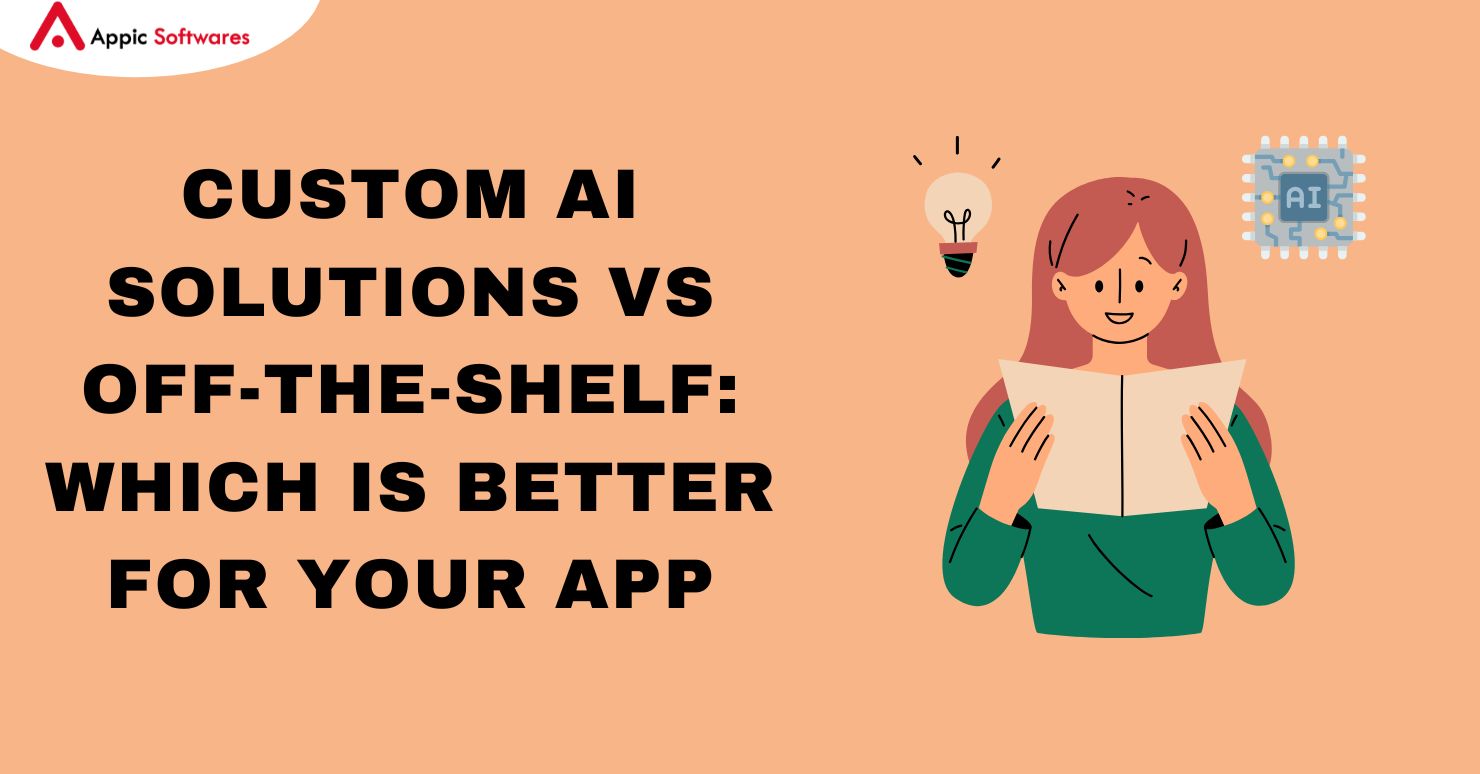
When you create an app, you may be adding smart features that can talk, think, or even learn while it runs. Or you could check out the options of a Custom AI solution or use one of the tools that are already out there. The choice can make a big difference. Choose wisely, and your app will be quick, cost you less in the long run, and provide a better experience for users. Here in this article, we are going to talk about Custom AI solutions and ready-made AI tools. We’ll look at key ideas, costs, work needed, and what can help your app grow. Whether you’re working with a generative AI development company or exploring tools on your own, understanding these options will help you make a smarter decision.
What Are Custom AI Solutions?
Custom AI solutions mean building software that runs machine learning, data models, and smart logic for your app. According to a detailed 2025 survey and analysis, nearly 70% of businesses investing in AI solutions find that custom AI delivers higher long-term ROI and cost-effectiveness compared to off-the-shelf alternatives. Often, open source tools buy or use many things that you do not need. With Custom AI, you create exactly what you want. For Custom AI development, we get a team of experts to study your idea, get data, test models, and write code to achieve your target. If you do not have in-house experts, you work with a custom AI development company. Over time, they will plan, make, test, and keep the system in good shape.
Typically, a custom path begins with selecting a goal, e.g, allowing users to talk to the app, sorting images, etc. Afterward, the team will use data that fits your goal. They clean that data so the AI doesn’t learn from mistakes, but from true examples. Then the team builds models with open source libraries or bespoke code. When they learn how to do it, they try the model and keep testing until they get it to do what they want. Then they write code to put it inside your app, add checks to watch how it works, and set up a plan to update it as you gather more data or need to change logic. This work can take weeks to months, based on how complex the idea is and how much help you need.
What Are Off-the-Shelf AI Solutions?
Off-the-shelf AI solutions are tools, libraries, or services that already exist and can plug into an app with less work. They come from big tech firms, start-ups, or open-source projects. You might see these tools under names like QuickChat AI, chat services from cloud providers, or image recognition kits you can install quickly. These ready-made tools save time in design, data prep, and testing. Often, you only need a few lines of code or a simple configuration to make them work.
Take QuickChat AI, for example. It offers a chat service you can add to your app with minimal effort. It already knows how to read text, choose an answer, and talk back in many styles. You do not need to gather data, train a model, or write core logic. Instead, you send text to the service and get a reply. Another example is image recognition APIs. You send a picture to a server, it looks at pixels, identifies objects, and gives you back labels. You skip the work of data gathering, training on thousands of images, and tweaking code to run models. These solutions align with current AI development trends, where speed, scalability, and low-code integration are becoming key priorities for businesses building smarter applications.
Key Differences Between Custom AI Solutions and Off-the-Shelf Tools
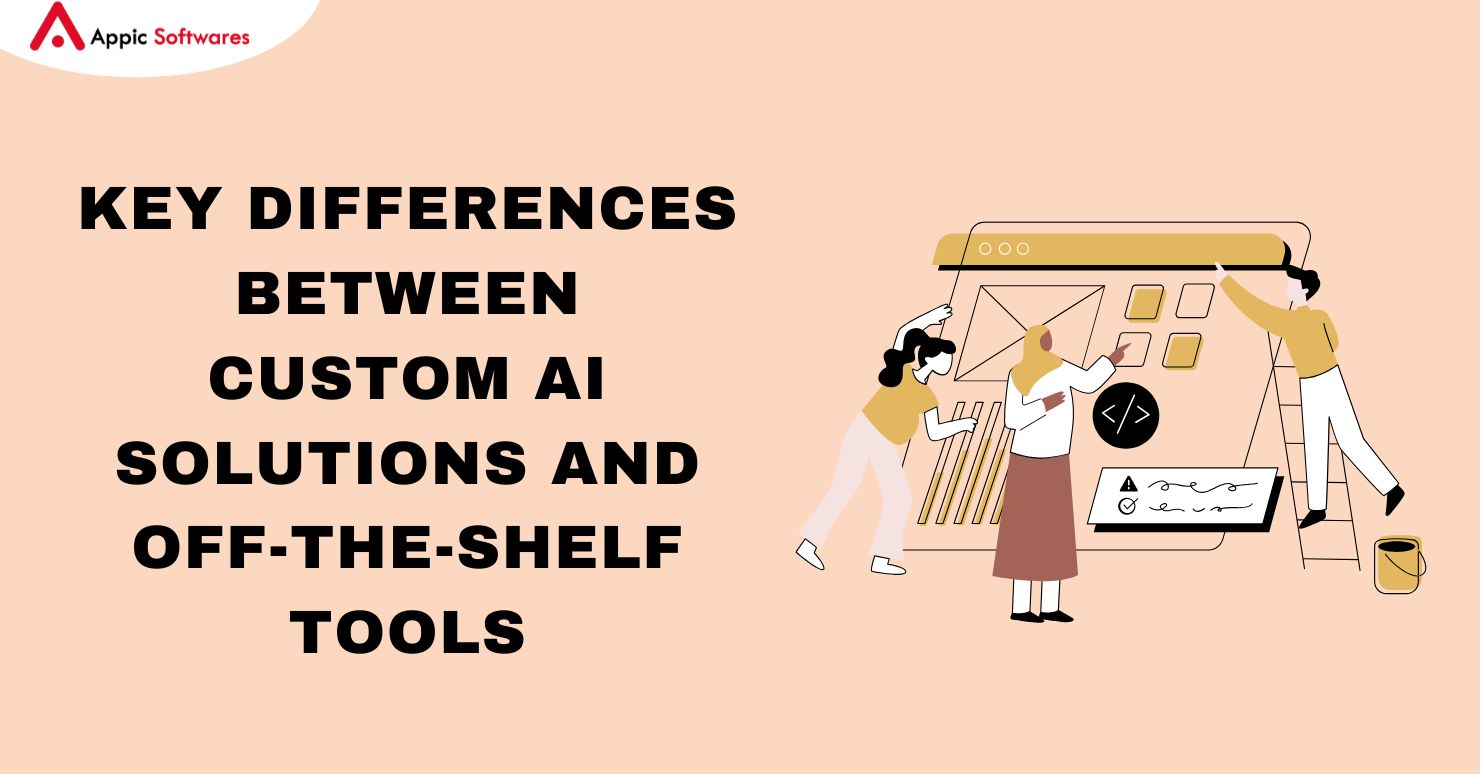
-
Control Over Features and Behavior
One main difference is how much control you get over each part of the system. With Custom AI solutions, you can decide how each layer of data flows, how the model learns, and how it responds. If you want a specific tone in your chat, or a unique process to sort data, you can build that in. The team can fine-tune every detail.
But if you use off-the-shelf tools, you work within the limits of what the service offers. You might not pick the exact model it uses, you might not shape its logic further, and you might not grab insights from the raw data. Off-the-shelf tools can lock you into certain workflows or limit how you can add new features later.
-
Speed of Launch
Off-the-shelf tools let you add smart features fast. You can focus on your core app flow, let the AI service handle the heavy lifting, and launch sooner. With Custom AI solutions, you need to plan, gather data, set up scripts for training, and test. That takes more time. If you need to get to market quickly, off-the-shelf tools can help you start while you plan a custom path. But if you rush without a clear roadmap for future growth, you might end up stuck with a tool that does not adapt as your app changes. This is why understanding your AI software development process early on is so important, it can influence both your speed and scalability.
-
Cost Over Time
Building Custom AI solutions often means paying more upfront. You need experts in AI, and those engineers may charge high rates. You also pay for computing power to train models and store data. But if your app scales, a custom model might run on cheaper servers, use fewer API fees, and fit your specific needs.
Over time, it can cost less per user. Off-the-shelf tools often use a pay-as-you-go model. You pay per request, per image, or per text processed. If your app has few users, that cost is good. As you grow, those fees can add up. You may reach a point where using a custom model is cheaper. Yet, off-the-shelf is simpler to start with and helps you avoid large upfront costs.
-
Scalability and Performance
If your app needs to serve thousands or millions of users, performance matters. Custom AI solutions can be built to scale on servers you control. You can make the model run faster or use less memory. You can add more servers or optimize code as traffic grows. Off-the-shelf tools must handle your load on their end.
Some services have limits or charge extra if you exceed basic tiers. If the service is down or slow, your app suffers. Custom models give you more options to improve speed and reliability, but need more effort to keep them running well
-
Data Privacy and Security
With a custom approach, your data stays inside your servers or private cloud. You decide who sees it and how it is stored. This helps if you have sensitive user data, health records, or business secrets. Off-the-shelf tools usually live on third-party servers. When your app sends data for processing, it moves outside your control.
This can be a worry in strict privacy settings or if regulations demand data to stay on premise. Some services offer private cloud options. They still require you to trust the provider. A custom AI development company can help set up systems that meet tight laws. That kind of work is not needed with off-the-shelf tools, but it also means you give up some privacy control.
How Custom AI Solutions Help Your App
-
Unique User Experience
When you pick Custom AI solutions, you can create a unique experience that stands out. Imagine an app that learns from each user and changes how it chats or recommends content. You decide the rules for that change. Maybe your model uses a mix of text, voice, and action data to better understand a user’s mood.
Or it learns to spot key points in user chats and answer with more empathy. When the model is yours, you can keep making it better based on actual user feedback. Off-the-shelf tools give a standard experience that thousands of other apps use. You might not find a way to add personal touches that fit your brand.
-
Better Fit to Domain
Every app has its own domain, health, finance, education, or entertainment. Custom AI solutions let you focus on domain-specific needs. For example, a health app needs models that read medical notes or images. You need data from hospitals and a team that knows medical privacy rules. A finance app needs a model that sees transaction patterns and warns of suspicious activity. Off-the-shelf services may offer generic models that work okay but miss specific jargon or context. If you build custom, you train on data that matches your users, so the model can be more accurate and useful.
-
Continuous Improvement
A custom system can learn from new data as your app runs. You can build a pipeline that collects new user behavior, tests changes to the model, and then updates the model in production. This keeps the AI fresh and accurate. If user preferences shift or you add a new feature, you can feed new data and tweak the model. With off-the-shelf tools, you rely on the provider to update their models. They might not know your users or goals. You wait for them to release an upgrade, and it might not fit your case well. Custom AI solutions let you control the pace and direction of updates. Although the cost to develop AI software may be higher initially, the long-term benefits of personalization and flexibility often outweigh the investment.
How Off-the-Shelf AI Solutions Help Your App
-
Faster Time to Market
When speed matters most, off-the-shelf tools let you move quickly. You skip the long process of data prep, model training, and testing. You just follow setup instructions. Many services have simple APIs where you send text, voice, or image and get results. This is good for smaller teams without AI experts. You can build a prototype, get feedback, and show investors or users before you commit large budgets. If the proof of concept succeeds, you can choose to build a custom model later. Meanwhile, you do not waste time on code that users might reject.
-
Lower Upfront Cost
Off-the-shelf tools often have free tiers or low access fees. You pay as you go, so if your app has low traffic, you spend little. You avoid large bills for servers or data storage. This is helpful for startups or teams with tight budgets. As you grow, you can still use off-the-shelf tools, but watch the bills. A sudden surge in user requests can push costs up quickly. At that point, if you see stable demand, you can plan a shift to Custom AI solutions to save money in the long run.
-
Built-In Maintenance
When you use a third-party AI service, the provider handles servers, updates, and security. You do not need to think about hardware failures or software patches. They fix bugs, update the models, and keep everything running. This is great if you do not have a team of AI engineers to manage the infrastructure. You can focus on creating new user features, user interface, or marketing. You still need to handle app servers and data, but you offload the heavy AI work to them. With Custom AI solutions, you need to plan how to update models, fix issues, and keep the system secure. That can be a big job if you do not have an experienced team.
Conclusion
Choosing between custom AI solutions and off-the-shelf tools depends on your needs. If you need speed and low up-front cost, off-the-shelf tools let you add AI features fast. They work well for common tasks. You can see results in hours. This helps you test new ideas.
If you need control, want to own your data, need a unique model, or expect high usage, custom AI solutions make sense. You pay more in the beginning to gather data, train, host, and maintain. You get a model that fits your app perfectly. You also meet privacy and compliance needs.
Partner with a Generative AI development company that understands your goals, your industry, and the AI software development process inside out.
Let’s bring your AI vision to life, contact us today to get started!
FAQs
1. What are Custom AI solutions and why choose them?
Custom AI solutions are systems built just for your app. A team learns your needs. They gather data, train models, and write code that matches your goals. You pick how the model works and what it learns. This gives you full control over how the AI behaves. You also keep data private. If you need unique features or work in a strict field like health or finance, Custom AI solutions fit best. They’re especially useful when developing autonomous agents in AI that need to act independently based on your specific business logic and data environment.
2. When should I pick an off-the-shelf AI tool instead of Custom AI solutions?
Pick an off-the-shelf tool when you need AI fast or have a small budget. These tools work out of the box. You just plug in an API key and start. They handle servers, updates, and data. If your task is common, like simple chat, basic image tagging, or text translation, off the shelf is fine. You can test ideas, get user feedback, and avoid large up-front work.






